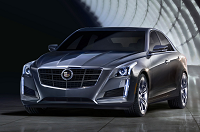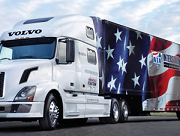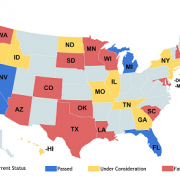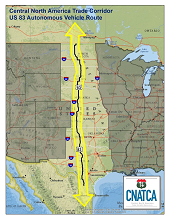Volvo: Roads will be Safer if 5.9 GHZ Band Reserved for Driverless Tech
Burney Simpson
An important driverless technology advocate ramped up the battle for wireless bandwidth, urging the U.S. Senate keep the Dedicated Short-Range Communications (DSRC) 5.9 GHz spectrum reserved for vehicle-to-vehicle (V2V) and vehicle-to-infrastructure (V2I) communications.
Ensuring that portion of spectrum exclusively to such autonomous and self-driving technologies will lead to safer roads and more efficient delivery of freight, Susan Alt, Volvo Group North America’s senior vice president of public affairs, told a Senate subcommittee on July 7.
OPENING 5.9 GHZ
Alt spoke before the Surface Transportation and Merchant Marine Infrastructure, Safety and Security subcommittee during a hearing titled “Technologies Transforming Transportation: Is the Government Keeping Up?“ (Visit here for a transcript of Alt’s testimony).
Volvo’s position as stated by Alt put it in opposition to Sen. Corey Booker, a New Jersey Democrat and the ranking member of the subcommittee, and Sen. Marco Rubio, a Florida Republican running for president.
The two joined in February to sponsor the Wi-Fi Innovation Act (S 242) that would require the Federal Communication Commission to test opening the 5.9 GHz band to greater public use beyond certain automated vehicle technologies.

In her testimony Alt noted there are now four types of automated technology available to heavy-duty truck users including adaptive cruise controls and rear view cameras; remote monitoring equipment of driver behavior; remote monitoring equipment that predicts vehicle problems; and technology that checks the driver’s route to avoid possible delays.
Taking autonomous driving technology to the next step means improving V2V and V2I communications, and keeping other Wi-Fi communications out of the 5.9 GHz band.
“The concern is that by allowing other technologies to be shared on the same spectrum, it could create a lag or latency in sending critical and lifesaving communication signals. Therefore, we … (oppose) the Wi-Fi Innovation Act that would open up the 5.9 GHz frequency spectrum to Wi-Fi access for non-safety and other applications such as entertainment and advertising,” Alt testified.
Leaders from the National Highway Traffic Safety Administration and the University of Michigan’s Transportation Research Institute (UMTRI) have also opposed opening the 5.9 frequency spectrum to non-safety applications.
ELIMINATING HUMAN ERRORS
As part of her testimony Alt offered two Volvo Truck videos. One from October 2014 previews heavy-duty trucks the video says will be “market ready in five to 10 years” and capable of providing a 360-degree scan from the driver’s seat that will virtually eliminate human errors.
The video claims the technology will be able to see all the objects within this 360 scan, including vehicles, bikes and pedestrians, and predict up to five seconds ahead of time what these moving objects might do. It will send a warning to the driver of possible accident-causing actions, and take control of the truck to avoid the accident if the driver doesn’t.
A second video released this month offers Volvo Vision 2020. It uses animation to show heavy- duty trucks platooning on the highway, allowing drivers in the following trucks to switch to a ‘driverless’ mode.
Alt also took the opportunity to champion two other major issues facing the freight trucking industry.
First, there is a need for federal definitions and rules on autonomous technology for freight trucks that supersede state regulations. Today, some states are setting their own rules, creating a patchwork of regulations, and that is slowing the development of the technology, she said.
Second, Volvo Trucks would like to eliminate the 12 percent Federal Excise Tax on the sale of a new heavy-duty truck. Adding new autonomous technologies will make trucks more expensive and the tax more onerous. Instead, replace the excise tax with a higher fuel tax, which will have the added benefit of encouraging the adoption of the new technologies, said Alt.
Volvo Trucks markets heavy-duty trucks, engines, and transmissions under the Volvo and Mack brand names, along with marine engines, coaches, and transit buses, said Alt. The U.S. is its largest market.
Feature photo courtesy America’s Road Team program sponsored by Volvo Trucks.



